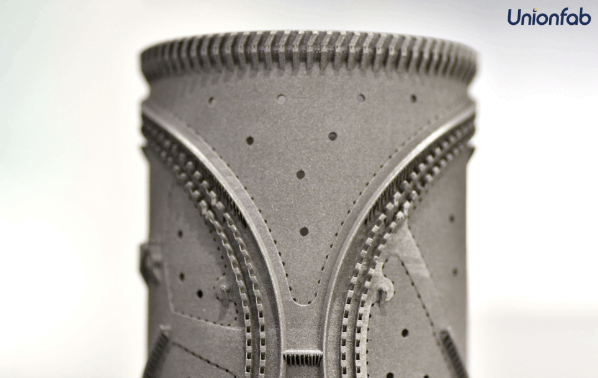3D Printing in Healthcare[ + Real-life Cases]
![3D Printing in Healthcare[ + case studies]](https://ufc-dtc-cms.oss-accelerate.aliyuncs.com/blog/20250218/231222_hx45ypfmw.png)
Explore how 3D printing is revolutionizing healthcare with custom prosthetics, implants, and surgical models.
The Role of 3D Printing in the Healthcare Industry
3D printing technology is revolutionizing the medical field by offering customized, high-precision solutions for various applications. From personalized prosthetics to complex surgical guides, additive manufacturing enhances efficiency, reduces costs, and enables medical professionals to deliver better patient care.
This article explores how 3D printing is being used in healthcare, the materials and technologies best suited for medical applications, and how Unionfab’s services can help meet these needs.
Applications of 3D Printing in Healthcare
1. Prosthetics & Orthotics
3D printing allows for the production of highly customized prosthetic limbs and orthopedic devices, providing a better fit and improved functionality for patients. Unlike traditional manufacturing, additive manufacturing enables the quick adaptation of prosthetic designs based on patient-specific needs, reducing production time and cost.
2. Surgical Guides & Medical Models
Surgeons use 3D-printed anatomical models for preoperative planning, allowing for greater precision during complex procedures. Custom surgical guides help optimize bone-cutting and implant placement, improving surgical outcomes while minimizing errors.
3. Custom Implants & Bone Reconstruction
Additive manufacturing enables the creation of patient-specific implants, such as cranial and orthopedic implants, using biocompatible materials like titanium and PEEK. These implants fit precisely to a patient’s anatomy, leading to faster recovery times and better integration with the body.
4. Dental & Orthodontic Applications
The dental industry benefits greatly from 3D printing, as it enables the rapid production of crowns, bridges, dentures, and orthodontic models. The precision of 3D printing ensures a perfect fit, enhancing patient comfort and reducing adjustment time.
5. Medical Device Components
Complex, small-scale medical device parts, such as components for surgical tools, hearing aids, and drug delivery systems, can be efficiently manufactured using 3D printing. The ability to create intricate geometries that traditional methods struggle with makes additive manufacturing ideal for these applications.
Unionfab Case Studies
1. Medical Protectors
Unionfab successfully produced durable and lightweight medical protectors using advanced 3D printing technology, helping to enhance patient safety and healthcare efficiency. These protectors were designed for optimal strength and comfort, ensuring high usability in medical environments.

2. Stainless Steel 316 L-N95 Mask Mold
Using Selective Laser Melting (SLM), Unionfab created a high-precision Stainless Steel 316 L mold for N95 masks.
This mold allowed for rapid and efficient mass production of protective masks, contributing to public health efforts during critical periods.


3. PolyJet 3D Printed Medical Models
Unionfab utilized PolyJet technology to manufacture highly detailed, multi-material medical models. These models provided medical professionals with accurate, tangible references for surgical planning, improving training and procedural accuracy.

Choosing the Right 3D Printing Technology & Materials
Selecting the appropriate 3D printing process and material is crucial for ensuring the quality and functionality of medical applications.
Popular 3D Printing Technologies in Healthcare
Stereolithography (SLA): Best for high-detail medical models and surgical guides.
Selective Laser Sintering (SLS): Ideal for durable prosthetics and orthotic devices.
Multi Jet Fusion (MJF): Used for strong, precise, and functional parts.
Selective Laser Melting (SLM/DMLS): Suitable for custom titanium implants and surgical tools.
Polyjet: Ideal for illustrative, see-through medical models.
Commonly Used Medical-Grade Materials
Nylon (PA12): Strong and lightweight, used for prosthetics.
Titanium (Ti64): Perfect for orthopedic implants due to its strength and compatibility with the human body.
PEEK: A high-performance polymer for spinal and cranial implants.
Understanding the capabilities of each technology and material ensures that healthcare providers and manufacturers choose the best solution for their specific needs.Additional
Why Choose Unionfab for Medical 3D Printing & CNC Manufacturing?
Unionfab offers advanced 3D printing and CNC machining services tailored for the healthcare industry. Our expertise ensures high-quality, precision-manufactured parts that meet the stringent requirements of medical applications.
Our Advantages:
✔ Extensive Material Options: Biocompatible resins, medical-grade metals, and engineering polymers.
✔ Precision & Quality Assurance: ISO-certified production ensuring accuracy and consistency.
✔ Fast Turnaround: Rapid prototyping and low-volume production with competitive lead times.
✔ Custom Solutions: Tailored manufacturing to meet patient-specific and industry needs.
Conclusion
3D printing is transforming the healthcare industry by providing innovative, cost-effective, and highly customized solutions for medical professionals and patients alike. From prosthetics and implants to surgical guides and medical models, additive manufacturing continues to enhance efficiency and precision in medical applications.
Unionfab – Your Partner in Medical 3D Printing
Unionfab provides cutting-edge manufacturing solutions to meet the growing demands of the healthcare sector. Whether you need surgical models, custom implants, or precision medical components, we have the technology and expertise to deliver high-quality results.
Contact us today for a free consultation or request a quote to explore how 3D printing can benefit your medical applications. Or Get a Quote Now!


